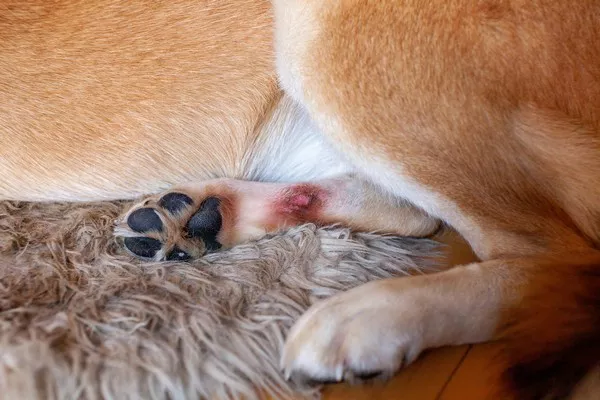Ringworm, despite its name, is not caused by a worm but rather by a fungus. This common fungal infection, also known as dermatophytosis, can affect the skin, scalp, and nails, leading to discomfort and sometimes unsightly rashes or lesions. One of the critical aspects of managing ringworm is understanding how it spreads from person to person. By comprehending the transmission pathways, individuals can take proactive measures to prevent its spread and effectively treat the condition.
The Fungal Culprit: What Causes Ringworm?
Before delving into the intricacies of transmission, it is crucial to grasp the nature of the fungal organisms responsible for ringworm. Dermatophytes, the fungi that cause ringworm, thrive in warm, moist environments and feed on keratin, a protein found in the outer layers of the skin, hair, and nails. The most common dermatophyte species responsible for human infections include Trichophyton, Microsporum, and Epidermophyton.
Modes of Transmission: How Does Ringworm Spread?
Ringworm can spread through various direct and indirect means, making it important to understand the potential pathways of transmission:
1. Direct Contact: Direct contact with an infected person is one of the primary modes of transmission for ringworm. This can occur through activities such as skin-to-skin contact, sharing personal items like clothing or towels, or engaging in contact sports where there is close physical contact.
2. Indirect Contact: In addition to direct contact, ringworm can spread indirectly through contact with contaminated objects or surfaces. Fomites, which are inanimate objects carrying infectious agents, can harbor fungal spores shed by an infected individual. Common fomites include combs, brushes, bedding, clothing, and gym equipment.
3. Animal Contact: While person-to-person transmission is the most common, ringworm can also spread from animals to humans. Domestic pets, particularly cats and dogs, can carry dermatophytes on their fur or skin, potentially transmitting the infection to their human companions.
4. Environmental Exposure: Fungal spores responsible for ringworm can persist in the environment, particularly in warm and humid conditions. Individuals may contract the infection by coming into contact with contaminated surfaces in public places such as locker rooms, swimming pools, or communal showers.
Factors Influencing Transmission
Several factors can influence the likelihood of ringworm transmission from person to person:
1. Immune Status: The body’s immune response plays a crucial role in determining susceptibility to ringworm. Individuals with weakened immune systems, such as those with HIV/AIDS or undergoing immunosuppressive therapy, may be more vulnerable to infection and its spread.
2. Personal Hygiene Practices: Practicing good personal hygiene, including regular handwashing and proper skin care, can help reduce the risk of ringworm transmission. Individuals should avoid sharing personal items and maintain cleanliness in shared spaces to minimize the spread of fungal spores.
3. Environmental Conditions: Environmental factors such as humidity and temperature can influence the survival and spread of dermatophyte spores. Warm and moist environments provide optimal conditions for fungal growth, increasing the risk of transmission in such settings.
4. Close Contact Settings: Settings that involve close physical contact or shared personal items, such as schools, daycare centers, and sports facilities, pose a higher risk of ringworm transmission. Implementing preventive measures and maintaining cleanliness in these environments is essential for minimizing the spread of infection.
Preventive Measures
Preventing the spread of ringworm requires a multifaceted approach that addresses both personal and environmental factors:
1. Maintain Good Hygiene: Encourage regular handwashing with soap and water, especially after activities that involve skin-to-skin contact or contact with potentially contaminated surfaces. Avoid sharing personal items such as clothing, towels, and grooming tools.
2. Keep Environments Clean: Regularly clean and disinfect commonly touched surfaces and shared items in household and communal settings. Launder clothing, bedding, and towels regularly, particularly if someone in the household is infected with ringworm.
3. Practice Animal Care: Ensure that pets receive regular veterinary care and maintain good hygiene practices, including grooming and bathing. Promptly treat any suspected cases of ringworm in pets to prevent transmission to humans.
4. Promote Awareness: Educate individuals, particularly those at higher risk, about the causes and transmission of ringworm. Encourage early detection and prompt treatment of infections to prevent further spread.
Treatment and Management
Effective management of ringworm involves both treating active infections and preventing recurrent episodes:
1. Antifungal Medications: Topical or oral antifungal medications are commonly used to treat ringworm infections. These medications work by killing the fungus responsible for the infection and relieving symptoms such as itching and inflammation.
2. Hygiene Practices: In addition to antifungal treatment, practicing good hygiene is essential for preventing the spread of ringworm and minimizing the risk of recurrence. Continue to follow preventive measures even after the infection has cleared to prevent reinfection.
3. Environmental Cleaning: Thoroughly clean and disinfect personal items, clothing, and household surfaces to eliminate any lingering fungal spores. Vacuum carpets and upholstery regularly to remove shed skin particles and reduce the risk of contamination.
4. Pet Treatment: If pets are suspected to be the source of infection, consult a veterinarian for appropriate treatment. Treat infected animals promptly and follow recommended hygiene practices to prevent further spread within the household.
Conclusion
Ringworm is a common fungal infection that can spread easily from person to person through various direct and indirect means. Understanding the modes of transmission and implementing preventive measures are crucial for controlling its spread and managing infections effectively. By promoting awareness, practicing good hygiene, and seeking prompt treatment when needed, individuals can minimize the impact of ringworm on their health and well-being.























